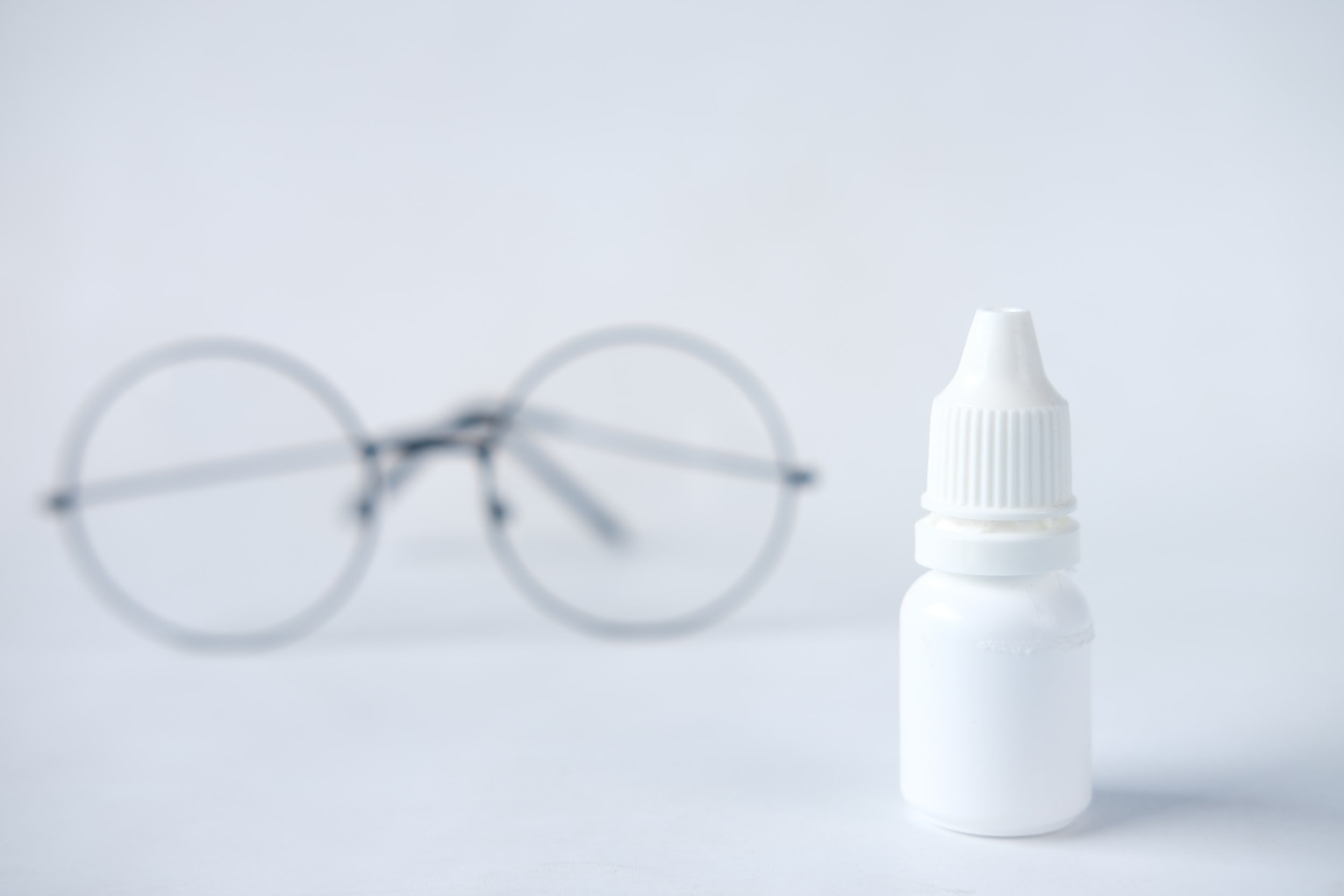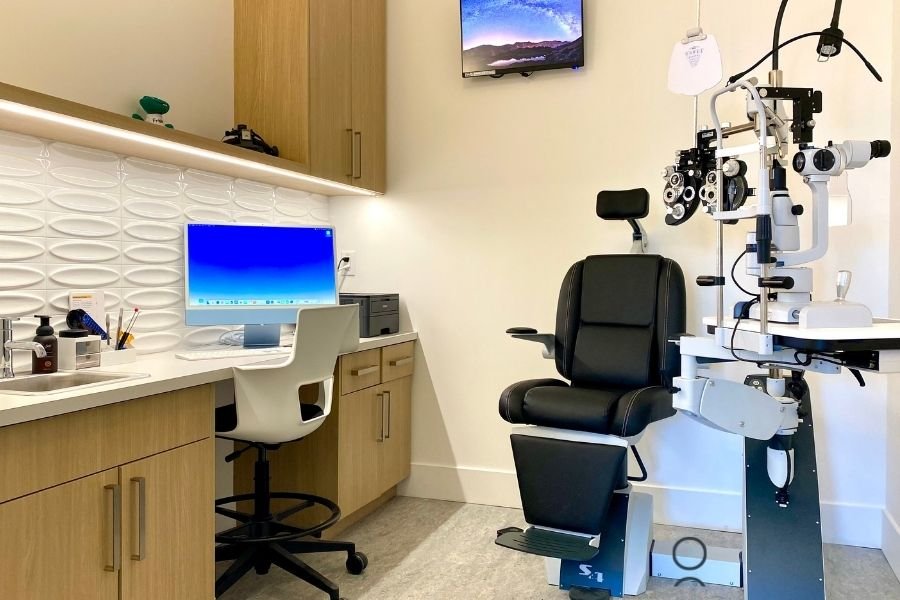
Low-Dose Atropine Eye Drops for Myopia in Edmonton.
Does Your Child’s Vision Keep Getting Worse Every year?
Myopia / Nearsighted Care for Kids
Myopia, or nearsightedness, is a condition in which people can see close objects clearly but have difficulty seeing objects farther away. Myopia is Canada's most common visual impairment, affecting approximately 35 to 40 percent of the population, and it's on the rise. In fact, by 2050, it's estimated that 50% of the population will need eyeglasses to see far away.
It's also one of the primary reasons that patients seek help from optometrists because they feel their vision keeps getting worse.
Myopic or Nearsighted People Are More Likely to Have Nearsighted or Myopic Kids.
When both parents are nearsighted, there’s nearly a 50% chance their children will require eyeglasses. If one parent is nearsighted the risk is 33%. Even if neither parent is nearsighted, the risk is still at 25%.
Why does Myopia Care Matter?
Even if your child has myopia as low as -1.00 D, it can increase their risk of glaucoma, myopic maculopathy, retinal detachment and cataracts by 2-3 times in their lifetime. If your child has high myopia, for example -7.00 diopters or more, they are at a higher risk for:
retinal detachment (44x's)
cataracts (6x's)
glaucoma (3x's)
macula maculopathy (127x's)
High myopia can also limit your child's quality of vision and even prevent them from being a candidate for refractive laser eye surgery.
So What Can Be Done About myopia?
Prescription eye drops are among the treatment options available to optometrists and ophthalmologists when managing myopia (nearsightedness) in children.
Over the past decade, multiple prescription eye drops have been researched. Atropine, however, emerged as the current pharmaceutical of choice. It has a good safety profile, a low cost, it's easily accessible (available as a generic) and well-tolerated by children.
It is important to be aware that all pharmaceutical treatments for myopia control are considered off-label uses. Off-label means that the drug being prescribed was not initially approved to treat the condition it is currently being used to manage. Off-label drug usage does not mean the treatment is unsafe, risky, or unproven. All medications carry risks, and you should thoroughly understand and accept these risks before starting any treatment program.
How Does Atropine Treat Myopia?
Atropine is a non-selective anticholinergic eye drop that works by blocking acetylcholine. Acetylcholine has been shown to play a role in the development and regulation of the eyes growth and elongation.
Although the action is not entirely known, numerous trials have shown repeatable treatment results with atropine at various dosages. Atropine seems to inhibit the thinning or stretching of the sclera of the eye, resulting in reduced eye growth.
Are Atropine Eye Drops New in Eye Care?
Atropine is not a new medication for eye care. Optometrists and ophthalmologists have routinely used atropine to dilate the eye's pupil to manage pain in acute or chronic inflammations, such as in arthritis in the eye. Pain reduction is achieved by the medication's ability to restrict the iris muscle (coloured part of the eye) movements.
Atropine has also been extensively used in children to treat amblyopia. This vision condition reduces vision in an otherwise healthy eye.
Atropine eye drops are placed in the ‘good eye’, which forces the weaker or amblyopic eye to work harder, thus improving the vision. This is accomplished because atropine dilates the pupil and reduces the near point of focus. The loss of near-point clarity forces the amblyopic eye to work harder to see up close, thus improving the child's visual acuity. This technique is often used when eye patching is either no longer effective or because of cosmetic of functional limitations imposed by wearing an eye patch.
Myopia Prevention & Treatment—From Clinical Research to Best Practices.
Will Atropine Eye Drops Blur My Child's Vision?
Blurry vision is an unwanted side effect when treating myopia or nearsightedness in school-aged children. Because of this, atropine eye drops are not prescribed at full strength of 1%, like in amblyopia treatment or pain management. Instead, a much-reduced concentration of 0.01%, 0.025%, or 0.05% is used, which is why we refer to it as low-dose-atropine therapy.
The concentration of atropine used is based on the child's level of myopia, risk factors, and how well they tolerate the medication. In most cases, we start with the lowest concentration and adjust our treatment strategy over time based on results.
What Are the Common Side Effects of Atropine?
Low-Dose atropine eye drops are well tolerated by most children. A pharmacist compounds the drops in a lubricating eye drop such as Systane Ultra or Refresh Tears, further increasing the comfort upon insertion and reducing any stinging. Most parents report little problems or discomfort from their children.
Atropine is traditionally used in medicine to help with low heart rate (bradycardia). As such, increased heart rate and flushing of the skin are the two most common side effects of increased dosage levels.
Some of the common side effects of atropine eye drops include:
Dry mouth
Blurred vision
Sensitivity to light
Lack of sweating
Dizziness
Nausea
Loss of balance
Hypersensitivity reactions (such as skin rash)
Rapid heartbeat (tachycardia)
Clinically, the most common side effects we see are pupil dilation of up to 1-2mm and a slight reduction in focusing ability on a higher dosage. Should these side effects be bothersome, parents can consider using photochromatic lenses or progressive lenses in their child glasses.
With any medication, there is always a risk of allergic reaction to the atropine or something within the compound medium. We strongly recommend that eye drops be used in the morning for the first week and children be closely observed for any signs of allergic reaction. Should any signs develop, the medication should be discontinued immediately and our office should be contacted, or 911 if the symptoms are more serious.
There is also concern about 'rebound myopia' upon discontinuation of the medication. Some children may notice a sudden jump in their nearsightedness and axial length. This rebound myopia effect is more likely in higher dosage concentrations. It's been proposed that drops should be tapered as opposed to suddenly discontinued, which is the protocol currently being used at Helio Optometry.
Important: Atropine eye drops can be toxic if ingested in high quantities. Like any medication, they should be kept safely away from small children. Using the medication more often will not improve the treatment outcome. Always follow your optometrist’s advice.
How Much Does Low-Dose Atropine Cost?
Low-Dose Atropine eye drops are a cost-effective treatment for myopia. As low-dose atropine eye drops are not commercially available, they must be dispensed by a compounding pharmacy. Your regular pharmacy should be able to recommend a location for you or order them in. As low-dose atropine becomes more common, many pharmacies have started to keep stock on hand.
The typical cost per bottle is $55-$100.
One bottle normally lasts between 1-3-months (30-90 days) depending on how it's compounded by the pharmacy. Bottle size is either 5mL (30-days) or 10mL (90-days). This is determined by the compounding pharmacy and the carrier drop they are using.
Low-dose atropine drops should be discontinued and returned to the pharmacy for appropriate disposal after either 30 or 90-days and a new bottle should be opened.
The annual cost of treatment is approximately $340-$650, however many drug plans may cover a portion or all of this bill.
Drops must be stored in the fridge.
Dosage is usually 1-drop per day.
Drops are usually compounded using 'Refresh Tears' lubricating eye drops as a base. (Active Ingredients Include: Boric acid; calcium chloride; magnesium chloride; potassium chloride; purified water; PURITE® (stabilized oxychloro complex); sodium borate; and sodium chloride. May also contain hydrochloric acid and/or sodium hydroxide to adjust pH.)
Where Can I Easily Purchase Low-Dose Atropine Eye Drops in Edmonton?
Crestwood Apothecary Pharmacy - Phone: 780.455.6979 - Edmonton
IDA West Japer Pharmacy
What are my Alternatives to Low-Dose Atropine Eye Drops?
Low-Dose Atropine eye drops are only one of the options that we use at Helio Optometry to help treat myopia or nearsighted progression in kids. Alternative options include:
Lifestyle | Modifications to help delay the onset of myopia
Eye Drops | Low-Dose Atropine 0.01%
Eyeglasses | Executive Bifocals
Contact Lenses | MiSight 1-Day Contract Lenses
Contact Lenses | Orthokeratology
It's important to talk with the optometrists about your child's unique case history, lifestyle requirements, progression history, and personal preferences when selecting a treatment. It's important to know that we may adjust your treatment option along the way based on results, age, and lifestyle. Consistency in treatment, however, is crucial to achieving the desired results. The best place to start though is by booking your kids eye exam with one of our optometrists.
Book an appointment to see one of our Edmonton optometrists and discover if low dose atropine treatment is right for your kids.
FAQ’s about Low Does Atropine for Myopia Management
-
Yes. Alberta Health Care covers the cost of the eye exam for kids, including follow-up visits when required. However, they do not cover the cost of the medication.
-
No. Most pharmacies don’t stock these eye drops. However, they may be able to order them in for you.
-
With all myopia control treatments, it’s recommended that your child has an eye exam every 6-months. In some cases, this may be reduced to 3-month intervals.
-
Myopia control is designed to slow the rate of progression by up to 59%, but not completely stop it. Your child’s prescription will continue to change, but at a slower rate and at a lower magnitude.






